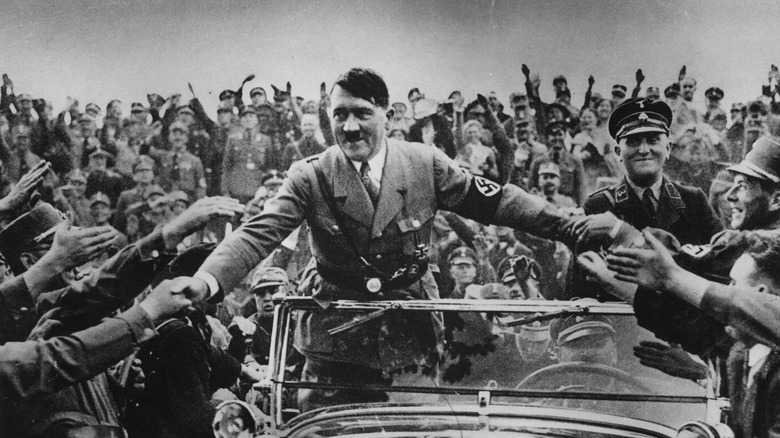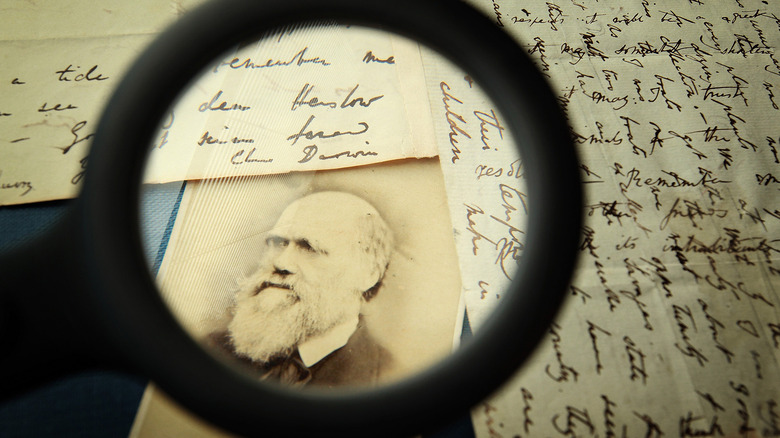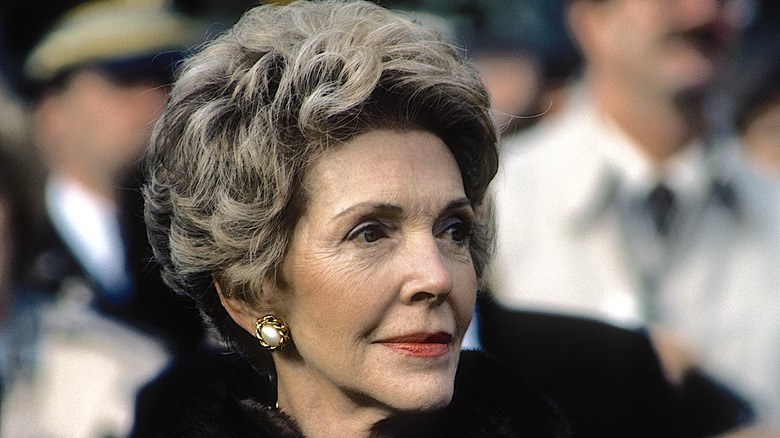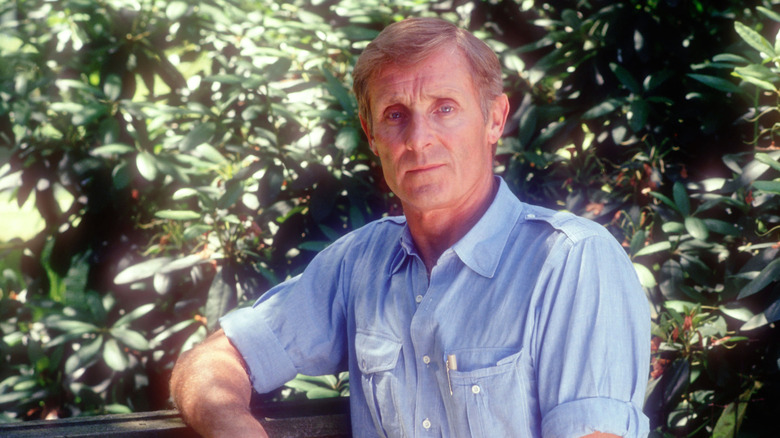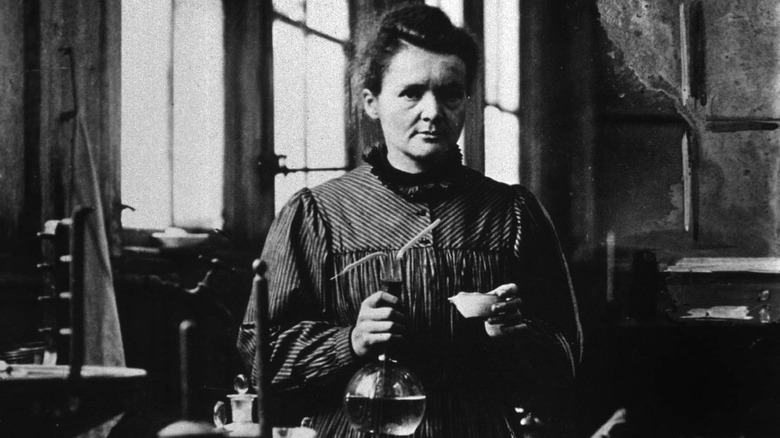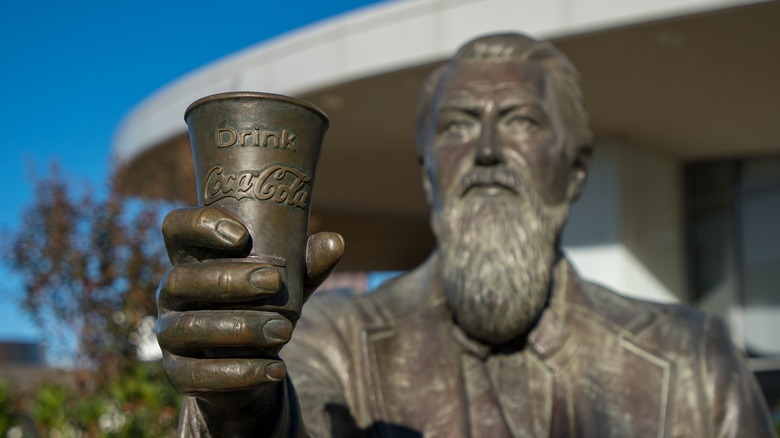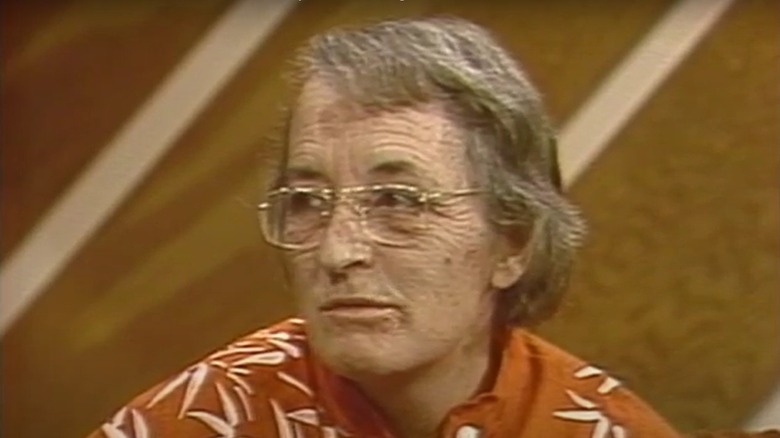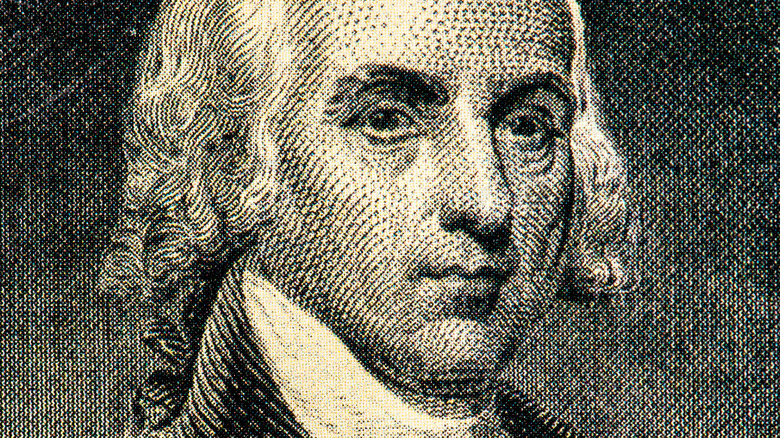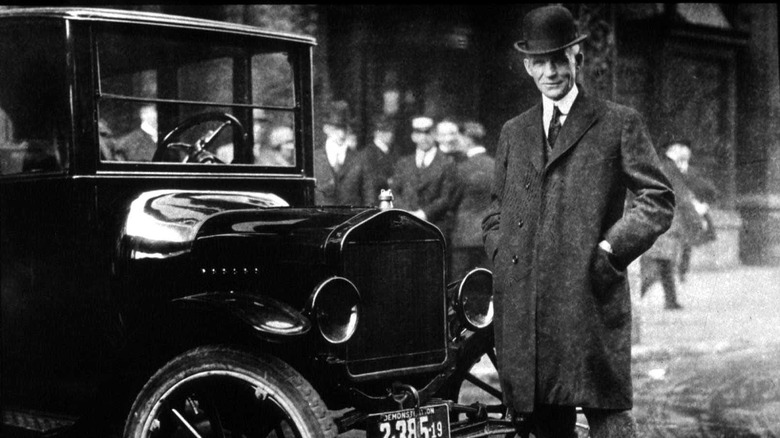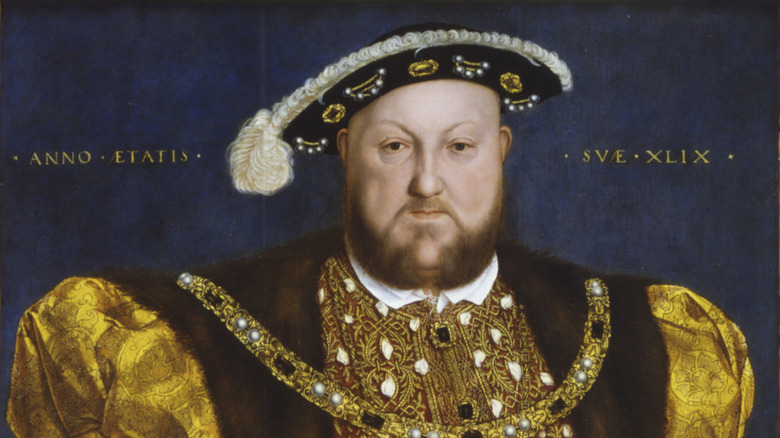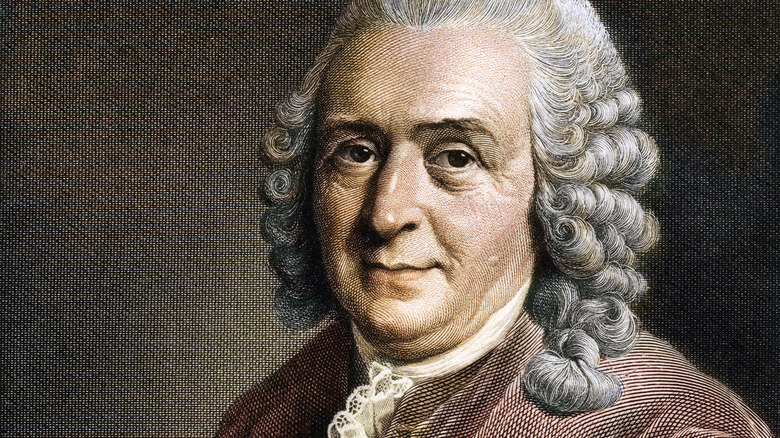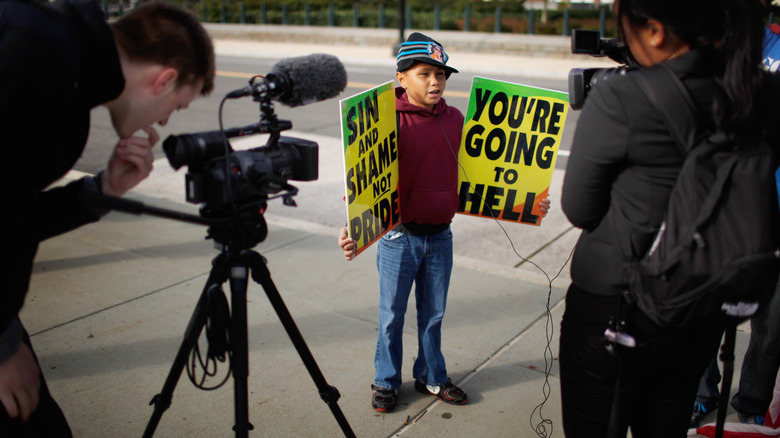Famous Dead People Who Are Still Causing Problems Today
It's no secret that the world is in pretty dire straits. Every day, headlines are filled with news of more conflict, from outright war to people despising each other just because they happen to have a different skin color, set of religious beliefs, or tolerance for conspiracy theories. People are weird creatures who will find any reason they can to hate each other, and maybe? Maybe we were just all doomed from the moment those early life forms crawled out of the ocean, looked around, and thought, "This looks alright, then."
Don't agree that happened? That's one of the things we're going to talk about. Most of the ideas, concepts, and beliefs that cause nothing but division in the modern world can be traced back to being created, or at least heavily influenced, by someone who may (or may not) have had any idea what they were unleashing on the world. They may not be around to see what their work has done to the world today, but at least we can talk about them and know who to curse.
Charles Darwin
Firstly, it's not Charles Darwin's fault he's caused so much trouble, and here's the thing: According to The British Newspaper Archive, his ideas about evolution were hugely controversial even in Victorian society. It all really kicked off in 1837, says Smithsonian Magazine, with the words "one species does change into another." Darwin spent 20 years collecting data before he started presenting his ideas.
And then? They were largely misinterpreted and misunderstood. OpenMind took a look at what he said and didn't say, along with what people are still arguing about today. Illustrations and caricatures denouncing the idea that monkeys somehow morphed into people were being drawn even as he was releasing his work, writing that primates — including monkeys and man — had a common ancestor. It wasn't a new idea: Concepts of evolution had been floating around since about 500 B.C., but it's Darwin who gets all the flak.
And he still does. In 2013, Pew Research Center found that Americans' views on where humans came from were split about 60/33 in favor of evolution (similar to their 2009 survey results). Still, in Forbes' review of a 2022 book called "Creationism USA," they noted that author Adam Laats insisted there were "irreconcilable differences" between the sides. The National Law Review wrote in 2019 that even though the U.S. Supreme Court decided a long time ago that evolution would be taught in schools, some state legislators were still pushing for the teaching of creationism in public schools.
Nancy Reagan
Every Gen-Xer heard it at some point, in some context: "Just Say No." When former first lady Nancy Reagan died in 2016 at age 94, her obituary in The New York Times talked about her coining of the phrase, and using it in her campaign against drug and alcohol abuse. And it was certainly a full-steam campaign. Unfortunately, that's about the best thing that can be said about it.
In the years since, the campaign has been lambasted as oversimplifying the problem of substance abuse and addiction.
One of the first things that happened was addiction was turned into something widely interpreted as a moral failure, and those needing help were villainized. The Guardian notes that instead of giving people the information and the facts needed to make educated decisions, a massive problem — and industry — was boiled down into a deceptively simple concept: Just say no, or else you're a moral failure, and your addiction is all your fault.
By 2021, CNBC reported that more than a trillion dollars had been spent in the war on drugs, and enforcing policies that grew out of the "Just Say No" campaign. Those were things like zero-tolerance policies, "stop and frisk," and drug-sniffing dogs in schools. The mass incarceration of non-violent drug offenders meant one in five people behind bars were there for drugs, something that hasn't improved the problem whatsoever. Vanda Felbab-Brown of the Brookings Institution told CNBC, "We are still in the midst of the most devastating drug epidemic in U.S. history."
If you or anyone you know is struggling with addiction issues, help is available. Visit the Substance Abuse and Mental Health Services Administration website or contact SAMHSA's National Helpline at 1-800-662-HELP (4357).
Peter Benchley
It's not often that a work of fiction has a catastrophic impact on the world's ecosystem, but according to Simon Thorrold of the Woods Hole Oceanographic Institute (via Boston.com), that's precisely what happened with "Jaws." He explained: "It provided cover for people who simply wanted to go out and kill sharks under the guise of somehow making people safer, which there's no evidence that was the case at all."
The theatrical adaptation of "Jaws" was released in 1975, and it led to the "Jaws effect," a phrase coined by Christopher Neff from the University of Sydney, Australia (via Mongabay). That's the belief that shark encounters are always fatal, and killing them is a necessary step in keeping the world's waters safe. That belief has ultimately led to the mass slaughter of up to 100 million sharks each and every year, and — perhaps unsurprisingly — researchers say that shark populations have plummeted (via the BBC). That doesn't just mean shark populations are being devastated; removing predators from the environment on such a grade scale is having a domino effect on the ecosystems that rely on them.
Peter Benchley died in 2006, and his obituary in The New York Times noted that he had come to not only appreciate the grandeur of sharks, but to regret ever writing "Jaws" in the first place. For more than 30 years, Benchley openly spoke about the misconceptions that the book and the movie spread, even writing other, more accurate books about sharks (via CBS). The damage, however, had been done.
Marie Curie
According to Smithsonian Magazine, when Marie Curie first headed to the U.S. back in 1921, she was lauded for her contributions to the scientific community. By that time, she had already discovered both polonium and radium, which would kick-start the race to develop the atomic bomb.
Curie did a lot of good with her discoveries, too: According to the Atomic Heritage Foundation, she spent World War I heading up the Red Cross Radiology Service, using X-ray technology to treat wounded soldiers. Not too long afterward, she died.
Curie was relatively young at the time of her death in 1934, just 67 when she passed away due to what's believed to have been either leukemia or anemia. Her death followed a long bout of chronic illness, which The New York Times says was the result of her decades of work around radiation. She died never having acknowledged the connection between radioactivity and sickness, and didn't live to see the 1939 launch of advisory committees put together to appeal for grants in the research of atomic weapons.
In 2022, The Guardian reported that experts were warning that for the first time since the end of the Cold War, the number of nuclear weapons was on the rise. While it goes without saying that countries like the U.S. and Russia were going to "Dr. Strangelove" their way through the decades, other countries — like France and the U.K. — were gearing up, too.
Dr. John Stith Pemberton
Dr. John Stith Pemberton's invention is iconic: Coca-Cola. After his death in 1888 — which, says the New Georgia Encyclopedia, came five months after filing the paperwork to incorporate his Coca-Cola Company — he was lauded as "the oldest druggist of Atlanta and one of her best-known citizens." A good portion of the city shut down for his funeral.
Pemberton, says the Museum of Arts & Sciences, hit on a sort of perfect storm of circumstances and advertising brilliance that kick-started Coca-Cola's journey to the very top of the world's drink market. More than a century after Coca-Cola was invented, it's still at the top of the market, for better or worse. Mostly, for worse.
The problem was best summed up by a 2013 study done as a joint effort between multiple universities, including Cambridge and Stanford (via NIH). There was a lot of data, but the key finding was that when soda consumption went up, so did the percentage of overweight and obese people.
In the years since, Coca-Cola has continued to get called out for things like influencing the obesity policies of nations like China (via The Guardian). The company has also specifically targeted teens in its marketing campaigns, even as obesity rates in children continued to skyrocket (via The Washington Post). And in 2015, The Guardian reported that not only did Mexico love Coca-Cola, but it also had the world's highest death rate from chronic illnesses rooted in sugar consumption. It turns out that taking out the cocaine didn't make Coke much healthier, after all.
Elisabeth Kübler-Ross
Elisabeth Kübler-Ross was a psychiatrist who most famously created the five stages of grief — denial, anger, bargaining, depression, and acceptance. She did a ton of work revolutionizing the way Western society both cares for those near death, and talks about death. But some of her work has been misinterpreted, and that's a bad thing.
Kübler-Ross died in 2004. According to The New York Times, she suffered a series of strokes throughout the 1990s, and in 1997, she wrote in her autobiography, "I always say that death can be one of the greatest experiences ever. If you live each day of your life right, then you have nothing to fear."
Here's where Kübler-Ross' work is hurting those living through loss. McGill says that she developed her five stages of grief after interviewing scores of people who were diagnosed with a terminal illness. It was never meant to be applied to people mourning the death of a loved one, yet it is — all of the time.
Studies that have tried to apply the five stages of grief to mourning found that it doesn't work for everyone. In fact, McGill noted that a 2002 study found that only about 11% of people can expect to experience grief in the way Kübler-Ross wrote about it. Numerous psychologists and psychiatrists interviewed by the BBC condemn the continued use of the Kübler-Ross model for a simple reason: When people don't find their grief lining up with the model, it can cause even more distress.
James Madison
No one wanting a peaceful, quiet, conflict-free holiday dinner ever started the conversation with, "So, how about those gun control laws?" According to data collected by Pew Research Center, 48% of Americans consider gun violence to be one of the major problems in the country. It's also worth noting that 6% say it's not a problem at all.
How did America get to this incredibly divisive point? The Second Amendment: proposed and written by James Madison, ratified in 1791, and a thorn in the nation's side ever since.
There's nothing straightforward about the issue, going all the way back to what Madison intended the law to be. According to LiveScience, it was originally written to guarantee states the power that went along with their own militias. Today, that's been turned into the National Guard. Far from fulfilling its original intent, the Second Amendment has turned into a massive argument about whether or not civilians have the right to own modern-day assault weapons and other high-powered firearms.
A decade after the Second Amendment was ratified, Madison inherited his family estate of Montpelier — and the slaves who built it. He became president, got the young United States through the War of 1812, retired, and died at the breakfast table on June 28, 1836. The country he helped found has continued to pay tribute to his legacy by arguing over what, exactly, he meant by "the right of the people to keep and bear Arms."
Henry Ford
Henry Ford died in 1947, and when it comes to his legacy, there's not enough paper in the world to record just how many ways he's still causing trouble today. So, let's hit the high points.
History says that yes, Ford changed the way American manufacturing did business, but Henry Ford also had a dark side. He was a raging anti-Semite and racist, and not everything he put in place was a good thing. In addition to continuing to legitimize things like segregation, persecution of Jewish people, and a refusal to promote minorities, he — and his private police force — also went a long way in destroying workers' unions. Oh — and he helped destroy the possibility of the U.S. building an environment-saving public transit system.
Before Ford got his hands on the transportation industry, the CATO Institute says that every American city with a population above 15,000 had electric streetcar service. Bigger cities had commuter trains, personal transit systems, and subways. That ended with Ford for a few reasons, starting with his lobbying for more public roads, and more people buying his cars.
In addition, his infamous assembly line changed the way cities were set up. Where they were once built around a central commercial and industrial hub with residential areas on the outside — perfect for the so-called "hub-and-spoke" system of mass transit — industries adopting the assembly line needed more room. These factories moved outside of the city centers, and created odd urban layouts that weren't easy for public transit systems to accommodate. Mass public transit in America was no more.
Henry VIII
Henry VIII is famous for a lot of things, including sending two of his wives to the executioner's block. He's also known for breaking with the Catholic Church and dissolving the nation's monasteries, all so he could get divorced and remarried as he saw fit. He was married to Katherine Parr when he died in 1547, and according to the history of Hampton Court Palace, the 55-year-old king died a devout Catholic, despite his actions against the religion during his reign.
As with many problematic people, Henry VIII went above and beyond when it came to setting in motion a series of horrible events that unfolded between Ireland and England. This would carry on over the course of centuries.
Sky History explains that even though the two countries hadn't gotten along from the earliest days of Anglo-Norman invaders heading into Irish territory, things really started to turn ugly when representatives of Henry VIII tried to tell them that they shouldn't be Catholic anymore. In 1534, Lord Offaly of Kildare organized a Catholic revolt against the Crown, and that spiraled into a violent, brutal occupation by English forces.
The conflict lasted through Oliver Cromwell's rule and the more recent times of the Troubles, into the 21st century. Every summer, cities in Northern Ireland hold Orange Order parades, and tensions are still there. In 2018, The Guardian reported that the Protestant parades were interrupted by a bombing and a string of carjackings, and according to Ger FitzGerald of George Mason University (via The Conversation), the circumstances around Brexit have only made the divide deeper.
Carl Linnaeus
Scientific racism, says Smithsonian Magazine, is the oft-debunked yet horribly resilient theory that there is a biological basis for the inferiority and superiority of different races. It's the driving force behind things like eugenics and the Holocaust, and other, sneakier forms of discrimination that have remained in place well into the 21st century.
While people have been using the differences they see in each other as a reason to hate for a good long time, Sapiens says that when that hate became scientific, it became a whole other thing. And who's to blame for that? Carl Linnaeus.
That name should sound familiar from basic science classes: He's the one that developed the scientific system of taxonomy for classifying the biological world. It's why we group things into species, genus, family, and so on. Among the organisms that Linnaeus classified were people, and he did so in what would prove to be a very dangerous way.
Per Sapiens, Linnaeus wrote: Europeans (Homo europaeus) were light-skinned and light-haired (and were "light, wise, inventor[s]"), Americans (Homo americanus) had dark hair and dark eyes (and were "unyielding, cheerful, and free"), Asians (Homo asiaticus) were dark-eyed (and "stern, haughty, greedy"), and those from Africa (Homo africanus) had dark hair with braids (and were "sly, sluggish, neglectful"). Linnaeus' descriptions of physical characteristics and personalities laid the groundwork for the false belief that some races were better than others. That led to a heck of a lot of terrible events for centuries after his 1778 death.
Fred Phelps
Names are important: They conjure up an image of who we are and what we stand for, and when there's a mention of the Westboro Baptist Church, there's no doubt about what they stand for. The Southern Poverty Law Center calls them extremists and considers them a designated hate group, noting that they're not only proud to be able to claim that they've picketed more than 40,000 events, but that they stand by ideas about 9/11 being "vengeance and punishment for America's horrendous sodomite sins."
Protected in part by a 2011 U.S. Supreme Court ruling that declared their hate speech protected by the First Amendment, other countries have dealt with them in other ways: They're banned from entering the U.K. and Canada.
The whole sordid mess was founded by the infamous Fred Phelps in 1955. Phelps used his children and grandchildren to make up the core of the group, though several have since left the church. By the time he died in 2014, the WBC had grown to enough members that alongside an announcement of his death was a promise that they were going to continue the work that he started (via The Guardian).
In 2019, filmmaker Louis Theroux revisited the group, which was the topic of his documentary, "Surviving America's Most Hated Family." He wanted to know if they were continuing Phelps' mission of hate, intolerance, and general horribleness. They were.
Adolf Hitler
Adolf Hitler may have died in 1945, but his deeply racist ideas have been picked up by countless neo-Nazi and white supremacist groups who continue to spread the hate. While the United States Holocaust Memorial Museum stresses that these groups aren't Hitler and the U.S. isn't the Germany of the Third Reich, Hitler-inspired hate groups are still out there.
There are scores of them, so let's talk about just a few. In 2022, GBH of Boston took a look at a local group called the Nationalist Social Club – 131. Oren Segal, vice president of the Anti-Defamation League's Center on Extremism, defined them as "a small neo-Nazi group ... [who] view themselves as soldiers, essentially, who are at war with the Jewish-controlled system that is plotting the extinction of the white race."
Among their targets? Drag shows, Black Lives Matter signs, and college girls who date anyone not of their own race and ethnicity.
According to The Guardian, neo-Nazi extremists are more widespread than they might seem at first glance. They reported on far-right rallies (like Unite the Right), and people like Christopher Hasson. He was arrested in 2019 in connection with firearms and drugs, and it was only after his arrest that it was discovered he not only had neo-Nazi ties, but that he was trying to work out how he could possibly kill "almost every last person on Earth."
Hitler may be dead, but the voices of those following in his footsteps are getting louder.
